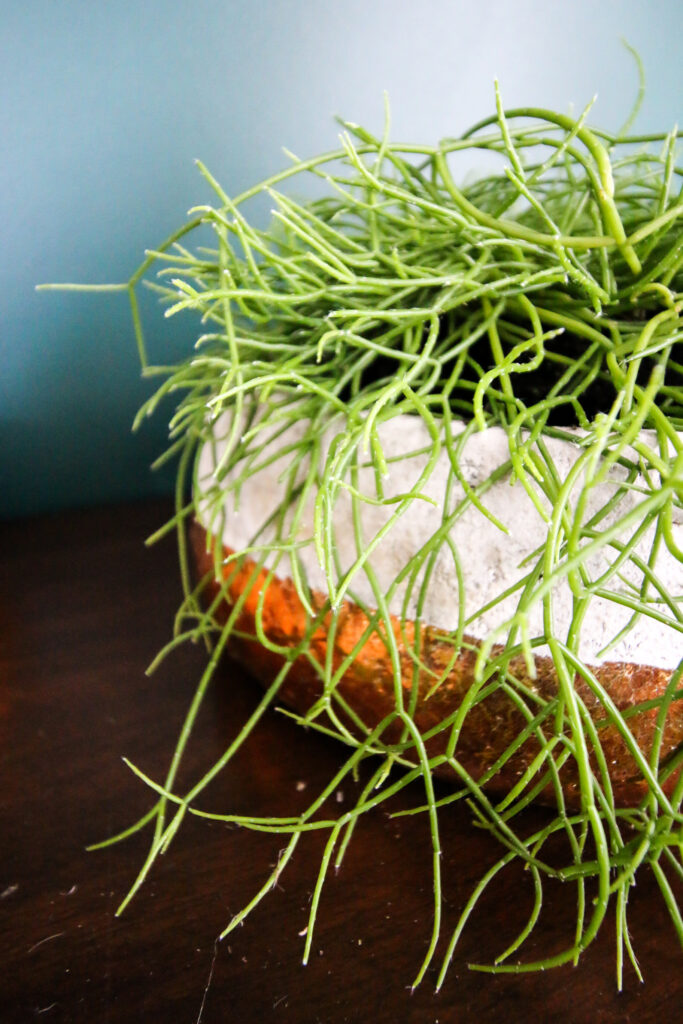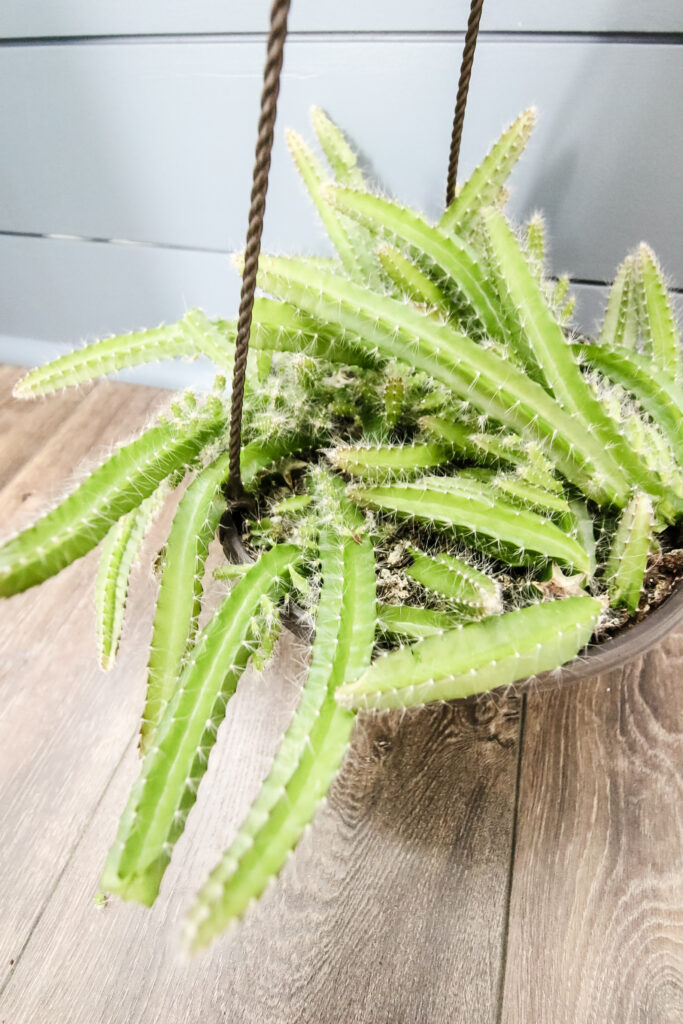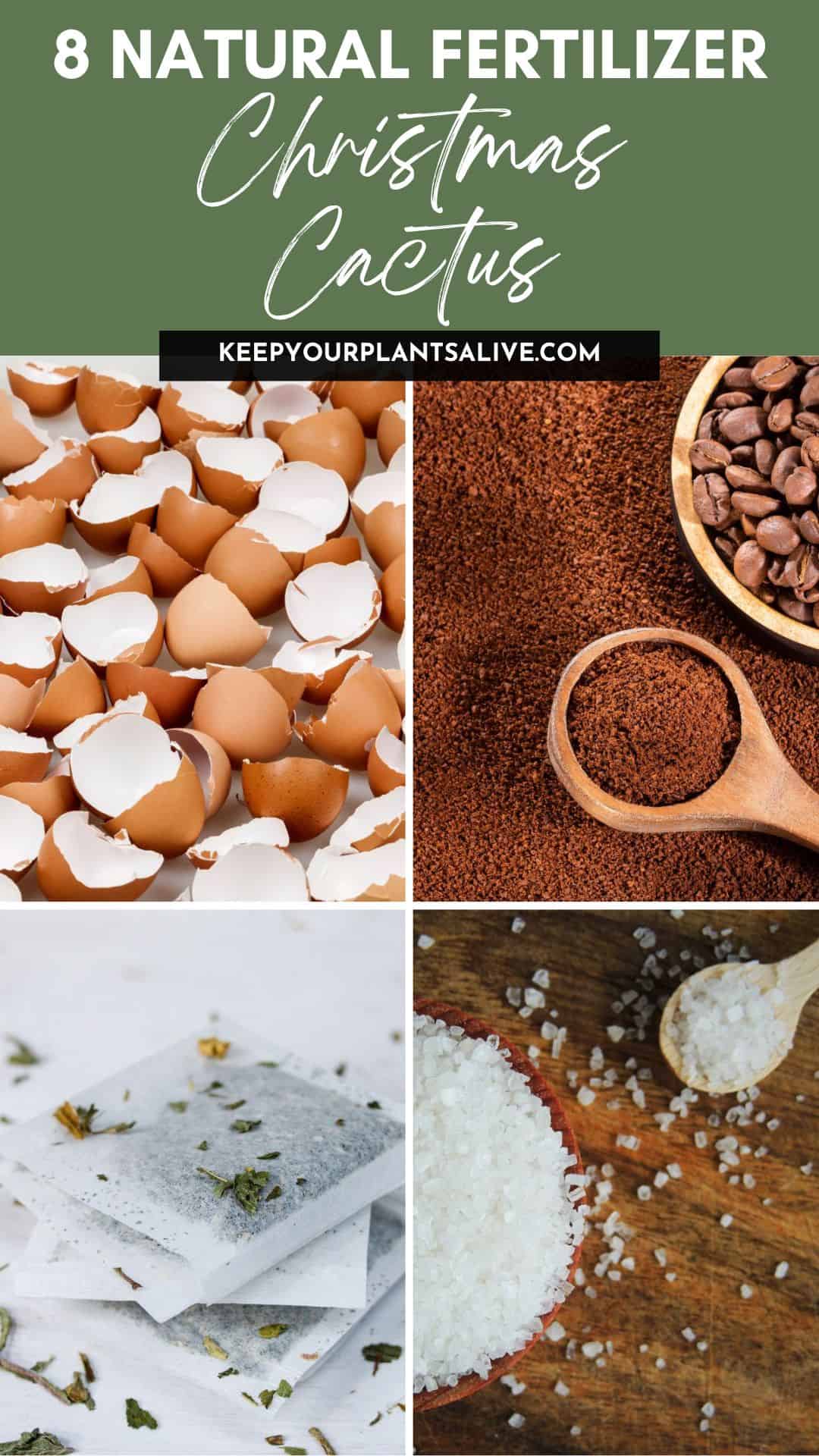Discover how to water a cactus in the winter to ensure its health and vitality during the colder months. Learn the best watering methods and factors that affect your cactus's hydration needs, along with signs of overwatering and underwatering to keep your plant thriving.
Developing various plant care techniques requires time, dedication, and focus. Some plants need more love, while others are not so needy.
But, amid all that constant learning and upgrading, you get to see all of your plants thrive around you – and for many, that is one of the biggest joys in life!
Now, today, the subject of our interest is the all-time favorite: cactus. It is a magnificent plant that thrives in very hot conditions and does that with little to no water.
But, what about when the weather cools down? Does that effect your watering schedule?
The question itself poses – how often should I water my cactus in the winter?
If you are looking after a plant that wants hot temperatures, a lot of sun, and not a lot of water, then it is okay to be puzzled about winter care for cactus plants.
Let's learn a little bit more about cacti, their watering requirements, and how to help them make the most out of the living conditions in your home.

How often should you water your cactus in winter?
The cactus is a drought-resistant plant, but it still needs a decent water supply to thrive. During the winter months, when you keep your cactus indoors in warm conditions similar to those outside in the summer months, the plant becomes dormant, meaning that the growing process is halted. In turn, watering cactus plants in winter needs to be done less frequently.
Consider watering your cactus in the winter at least three times less than usual, but be careful not to dehydrate it.
The best approach is to observe it closely to know how much water it needs.
Notice the stems, the leaves, and whether they seem stressed due to inadequate watering.
Dry cacti will begin to wither and may look wrinkled or limp. This is a sure sign that your plant needs more water!
What is the best watering method for a cactus?
Now, a unified approach cannot be applied to cactus in winter – many environmental and non-environmental factors will contribute to your winter care for cactus plants.
Something you can use as a general guideline is the soak-and-dry approach. This means giving your cactus a good soaking by immersing it in water for about 10-15 minutes.
By setting the pot in a cup of water, you are bottom watering the plant. This keeps water off of the base of the cactus - which can get rotten if it stays moist - and just gives the roots the moisture they need to thrive.
This will ensure it gets enough moisture that will last until the next watering time.
Once you’re done with this, drain the excess water and allow the soil to completely dry out before the next watering.

How much water does a cactus need in winter?
After learning the general guidelines for watering cactus plants in winter, it’s time to get a bit more specific.
During the colder months, the cactus should be protected from the cold and watered properly, too.
As a rule of thumb, you are watering when the soil completely dries out, right?
Well, what contributes to the timeframe of that happening? You’ll find some of the factors listed below.
The size of the plant
The size of the cactus is the first and the most important thing you need to consider. Most of you are now probably thinking, “The bigger the cactus, the larger the amount of water”.
Well, you couldn’t be more wrong!
The younger and still-developing cacti have a higher growth rate; thus, they require more water than their fully grown counterparts.
The larger plants have a smaller surface area to volume ratio, which helps lower the rate of water evaporation from the plant's surface.
This means you need to provide a bit more water to a bigger plant, but you need to water the smaller plant more frequently.

The Species
Not all cacti are the same – this is something you should always keep in mind. With that in mind, various cacti in winter will behave differently.
The cactus species you have at home is another important factor determining how often you water the plant.
Even though the cacti are all part of the umbrella term that describes a tropical plant, their needs and habitats vary from one type to the next.
If you want to know what type of cactus you have, simply look at the container it came in. There should be a tag or a sticker containing all information.
Alternatively, you can take it to a garden center or try to identify it online using a reverse image search or plant identification app.
Type of pot
The type of pot you get for your plant is an important part of caring for cactus plants in winter because it will determine whether your plant will get the proper drainage or not.
The only thing you need to remember here is to avoid plastic pots because they trap a lot of moisture, and it takes a lot of time for the soil to dry out.
The terracotta pots are an excellent choice if you want to keep your cactus happy.

Temperature and humidity
Maintaining the right temperature and humidity levels is crucial for the well-being of your cactus, especially during the winter months. Cacti are native to arid regions and are adapted to hot and dry conditions.
In winter, when the indoor environment tends to be cooler and often less humid, it's essential to create a microclimate that mimics their natural habitat.
Temperature
Cacti, including many popular varieties like the prickly pear and saguaro, thrive in warm temperatures. During winter, it's advisable to keep your indoor cactus in a room where the temperature remains relatively stable and doesn't drop significantly at night.
Ideally, aim for temperatures between 60°F to 70°F (15°C to 21°C) during the day and slightly cooler at night, but not below 50°F (10°C).
Humidity
Cacti prefer low humidity levels, mirroring the arid conditions of their native deserts. However, in some indoor environments, especially during winter when heating systems are in use, the air can become excessively dry.
Dry air can lead to moisture loss through transpiration, potentially stressing your cactus.
To combat this, consider employing a few methods to maintain optimal humidity for your cactus:
- Grouping Plants: Place your cactus alongside other indoor plants. As they release moisture through transpiration, they collectively increase the humidity around them.
- Humidifiers: Using a humidifier in the room can add moisture to the air, benefiting both your cactus and other indoor plants.
- Pebble Trays: Set up shallow trays filled with water and pebbles near your cactus. As the water evaporates, it creates a humid microenvironment around the plants.

Signs of improper watering in cacti
Cacti can be either over or underwatered - and both are bad!
Signs of Underwatering a cactus
When your cactus is not receiving enough water, it will exhibit clear signs of distress. One of the most noticeable signs is the appearance of shriveled leaves.
Cacti, in their natural habitat, are excellent at storing water in their tissues to survive prolonged periods of drought. If they're not getting sufficient water, their internal moisture reserves deplete, causing the leaves to lose their turgidity and become shriveled.
Moreover, an under-watered cactus may develop a brown and dried-up appearance, especially from the bottom upwards. When the plant lacks adequate hydration, its lower parts are the first to suffer.
Additionally, if you gently touch the cactus and it feels soft, it indicates severe dehydration. The plant's cells are collapsing due to lack of water, making it crucial to act promptly.
Signs of Overwatering a cactus
Overwatering poses a more severe threat to cacti. When a cactus receives excess water, it can't absorb it all, leading to swelling and rupturing of its cells.
This condition, known as edema, manifests as brown, water-soaked lesions or blisters on the cactus's surface.
These lesions result from the cells bursting due to the excessive internal pressure caused by water intake surpassing the plant's capacity to store it.
Furthermore, overwatered cacti often exhibit a soft, mushy texture, especially at the base. This sponginess indicates that the cells have absorbed more water than they can hold, leading to a breakdown in the plant's structural integrity.
Unfortunately, when a cactus reaches this stage of overwatering, recovery becomes challenging. The risk of root rot and irreversible damage to the plant's vascular system is significantly heightened.
Addressing overwatering promptly involves unpotting the cactus, allowing its roots to dry, and providing a well-ventilated environment.
However, the success of revival is not guaranteed, emphasizing the critical importance of cautious watering practices.
Understanding these distinct signs of improper watering is essential for the well-being of your cactus. By observing your plant closely and responding promptly to these indicators, you can adjust your watering routine, ensuring your cactus thrives in its environment.
Learning all about cacti in winter is a fun road filled with information that will make you want to know even more about it!
Now that you have learned all there is to know about watering cactus plants in winter, keep on reading – our blog is filled with useful information about your plants!
Thanks for reading!


Hey there, I'm Morgan, a houseplant enthusiast from sunny Charleston, South Carolina. Growing up surrounded by my mom's lush orchids and African violets, I discovered the magic of bringing nature indoors. Thanks to the pandemic, I delved deeper into houseplants, discovering their power to uplift moods and transform spaces. I'm here to spill all my secrets, helping you pick the perfect houseplant - and make it happy. Let's keep your plants alive, together! 😊




